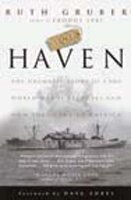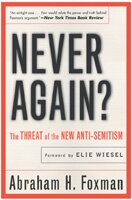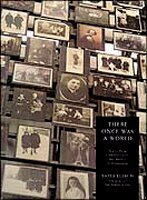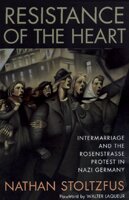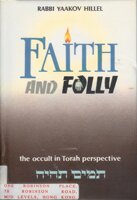|
Haven
By Ruth Gruber
2000, Three Rivers Press, New York, New York, 334 pages
At the airport, on the docks, I watched them come, great rivers of Jews, flowing into the sea which was Israel. Then they came, young and old, sick and well, blind and sighted, in a migration such as the world had never seen. I helped them down the gangways. Some of the older women kissed me. I hugged the children, not knowing who needed the hugs more. I filed stories filled with joy, But soon the joy turned to bile.
This is an incredibly written true story of epic proportions. Ruth Gruber details the journey of 1000 Holocaust victims chosen by the US government to be rescued from the Nazis during World War II. The refugees were then placed in a camp in Oswego, New York where in limbo, without a legal status under US law. Gruber, a journalist, writes this story from the unique perspective of the one who was given the role as the primary caretaker and liaison for this group of survivors. At the end of the book, Gruber lists the achievements of the group. Each one of their stories of survival could be a novel in its own right.
(Reviewed in JTA Issue Dec 08/Jan 09)
Never Again?
The Threat of the New Anti-Semitism
By Abraham H. Foxman
2003, New York, New York, Harper SanFrancisco, 294 pages
Within living memory, we've seen what can happen when a nation or continent experiences an unrestrained outbreak of anti-Semitism. The Jews of the world- and all the people of goodwill who share their desire for a just and free society- learned a series of critical lessons from the tragic history of the twentieth century. Today, we understand how important it is to…warn the world and stave off the worst effects.
Abe Foxman, national director of the Anti-Defamation League, confronts anti-Semitism every day and is one of the leaders in the fight against hatred worldwide. He interweaves his personal history and tells how both of his parents perished in the Holocaust. In this comprehensive book, he details the reality of a new breed of anti-Semitism that spreads not only in clandestine meetings of extremist groups but thrives on the internet, through popular culture. Foxman explains that modern anti-Semitism is no longer confined to a particular sphere it is all around us.
(Reviewed in JTA Issue November 2006)
There Once Was A World: A 900 Year Chronicle of the Shtetl of Eishyshok
By Yaffa Eliach
1998, New York, Little Brown, 818 pages
On the 26th of September, 1941, all was quiet in Eishyshok, but for one drunken peasant who staggered about the center of the market place, dressed in Rabbi Szymen Rozowski's top hat and his long black coat, holding the rabbi's cane in one hand, a bottle of vodka in the other, and screaming in Yiddish, with uncontrolled glee, “Yidden, in shul arain!†(Jews, go to shul!) For the drunken Pole, the rabbi and the synagogue were the very symbols of Judaism, and now both were destroyed.
Yaffa Eliach creates an engrossing picture of life in Eishyshok. It's the village where her parents grew up and were married. Eliach treats every possible aspect of shtetl life, through the memories of its widely scattered children. Wonderful photographs accompany the text. A picture emerges of a vibrant but strange society, grittier and more sharp-edged than Fiddler on the Roof, a civilisation that was wiped out not only by the September 25, 1941 massacre of every Jew in the town, alluded to above, but by subsequent absorption of the area into the Soviet Union.
(Reviewed in JTA Issue September 2006)
RESISTANCE OF THE HEART: Intermarriage and the Rosenstrasse Protest in Nazi Germany
By Nathan Stoltzfus
Rutgers University Press
1996, 386 pages
“As of September 1944, there were 13,217 registered Jews in Germany; 12,987 of these lived in intermarriages. Virtually all, if not every one, of these intermarried Jews survived.â€
This book is a fascinating look at life in Germany for Jews who were married to Germans. The Rosenstrasse protest was the only successful spontaneous public protest to have taken place during the Third Reich. Along with reporting the events leading up to it, Stoltzfus discusses Jewish-German intermarriage in the decades leading up to the war, the political acrobatics involved in “separating†Jews and half-Jews (mischlinge) from “good†Germans, the Nazi propaganda machine and the deep strength of the German spouses. Stoltzfus, interviewing three couples who survived, makes the picture vivid and immediate.Â
(Reviewed in JTA Issue August 2006)Â
FAITH AND FOLLY: The Occult in Torah Perspective
Adapted by E. van Handel from Tamim Tiheyeh by
R. Yaakov Hillel Feldheim
1990, 119 pages
“If a person uses Practical Kabbalah… Instead of achieving a heightened perception and purity…he is liable to bring calamity upon himself…â€
In this short book, the author discusses a range of occult practices whose existence. The average modern Jew is likely completely unaware of. He explains how “practical kabbalah†has been hidden through the centuries to protect people from unscrupulous “mystics,†and re-emphasises the injunctions to have perfect faith in G-d and steer clear of anyone selling “kabbalistic†items. This volume might have been brought out to address the so-called Kabbala movement in recent vogue in celebrity circles. It's fascinating, albeit a little scary, to read about this side of Judaism.
(Reviewed in JTA Issue August 2006)Â
What do you like to read?
Please submit your book reviews to
Jewish Times Asia.Please include an excerpt from the book.
Please email:
This e-mail address is being protected from spambots. You need JavaScript enabled to view it
Â
|



















